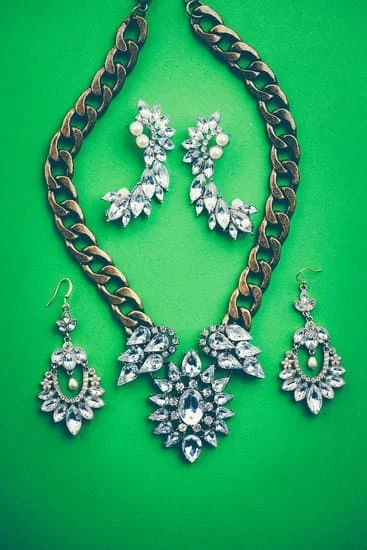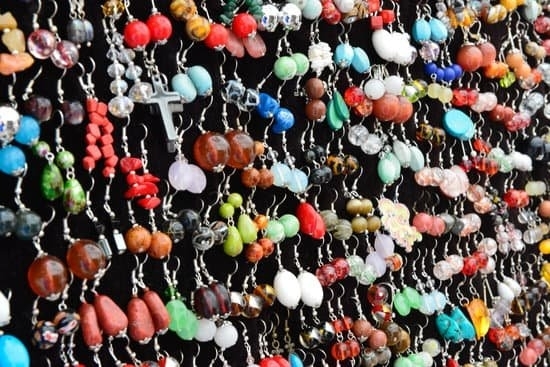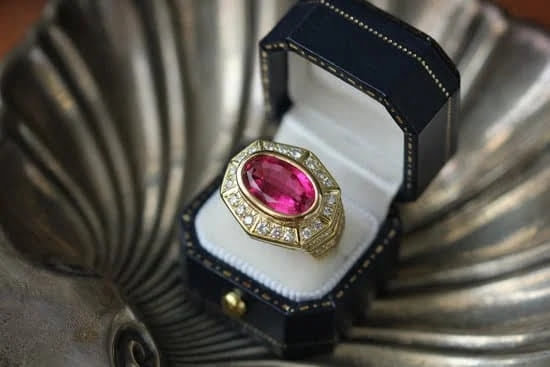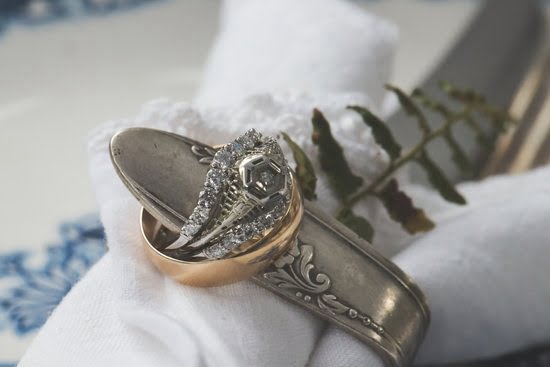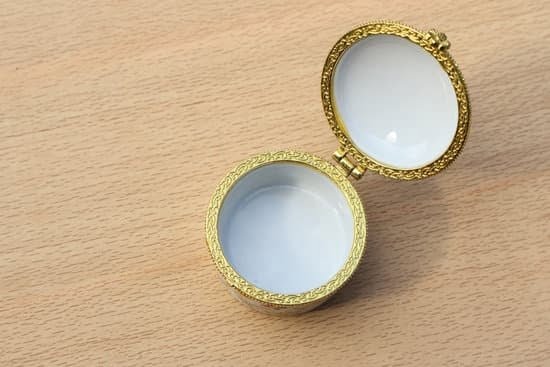Japan has a rich and fascinating history of jewelry-making that dates back to ancient times. The history of Japanese jewelry is a reflection of the country’s culture, traditions, and craftsmanship, making it an integral part of Japanese heritage. From ancient influences to modern innovations, Japanese jewelry has evolved over the centuries, carrying with it symbolism, meaning, and unique techniques.
Ancient Japanese jewelry was greatly influenced by neighboring cultures such as China and Korea, while also drawing inspiration from nature and religious beliefs. The evolution of Japanese jewelry techniques has been shaped by the traditional craftsmanship and artistic sensibilities that have been passed down through generations. Symbolism and meaning play a significant role in Japanese jewelry, with each piece carrying deep cultural significance.
As we delve into the history of Japanese jewelry, we will explore how the art form has transformed through various periods, including the Edo period where intricate designs and precious materials were favored. We will also examine the impact of modern innovation on Japanese jewelry design as well as the preservation and revival of traditional craftsmanship in contemporary times. Join us on a journey through time as we uncover the captivating story of Japanese jewelry.
Ancient Japanese Jewelry
The history of Japanese jewelry dates back to ancient times, with influences and traditions that have shaped the art form over centuries. The earliest known examples of Japanese jewelry can be traced back to the Jomon period (10,000-300 BC), where simple yet elegant accessories made from shells, bones, and stones were worn by both men and women. These pieces reflected the natural surroundings of Japan and the cultural beliefs of the time.
During the Yayoi period (300 BC-300 AD), Japan was introduced to new materials such as metal through contact with mainland Asia. This led to the development of more advanced jewelry-making techniques, including metal casting and wirework. Influences from Chinese and Korean jewelry traditions also began to surface during this time, shaping the style and design of Japanese jewelry.
The Asuka (538-710 AD) and Nara (710-794 AD) periods saw an influx of Buddhist culture from Korea and China, which further impacted Japanese jewelry. Intricate gold earrings, necklaces, and crowns adorned with gemstones and intricate filigree work became popular among the elite.
These pieces symbolized wealth, prosperity, and spiritual significance, blending indigenous designs with foreign influences. The interplay between native Japanese elements and external inspirations laid the foundation for the unique aesthetic that continues to define Japanese jewelry today.
Evolution of Japanese Jewelry Techniques
Japanese jewelry techniques have evolved over centuries, blending traditional craftsmanship with modern innovation. This evolution has been influenced by a variety of factors, including cultural changes, technological advancements, and global interactions.
Traditional Techniques
Historically, Japanese jewelry artisans utilized traditional techniques such as metalworking, filigree, engraving, and inlay to create intricate and delicate pieces. These techniques were often passed down through generations within artisan families or guilds, preserving the unique craftsmanship that defines Japanese jewelry.
Influence of Other Cultures
Throughout its history, Japan has had extensive contact with other cultures such as China and Korea. These interactions brought new ideas and techniques to the island nation, enriching the art of Japanese jewelry making. For example, during the Nara period (710-794), jewelry techniques from these neighboring countries were adopted and adapted to create innovative designs that combined influences from different cultures.
Technological Advancements
With the introduction of new technologies and tools from the West during the Meiji Restoration in the late 19th century, Japanese jewelry making underwent a significant transformation. Western metalworking techniques such as cloisonné enameling and gemstone cutting were incorporated into traditional Japanese practices, leading to the creation of unique hybrid styles that continue to be influential in modern Japanese jewelry design.
The history of Japanese jewelry techniques is a testament to the adaptability and creativity of artisans throughout different periods. The blend of traditional craftsmanship with outside influences and modern innovations has resulted in a rich legacy of exquisite and distinctive jewelry styles that continue to inspire designers worldwide.
Symbolism and Meaning in Japanese Jewelry
Japanese jewelry is deeply rooted in tradition and symbolism, with each piece carrying its own unique meaning. From ancient times to the modern era, Japanese jewelry has been imbued with symbols and motifs that hold cultural significance. Here are some of the most common symbols found in Japanese jewelry:
- Cherry Blossoms: In Japanese culture, cherry blossoms symbolize the fleeting nature of life and the beauty of impermanence. They are often depicted in jewelry as a reminder to cherish every moment.
- Dragons: In Japanese mythology, dragons are powerful and benevolent creatures that symbolize strength, courage, and good fortune. Dragon motifs are commonly used in traditional Japanese jewelry to bring luck and protection.
- Cranes: Known for their elegance and longevity, cranes are a popular motif in Japanese jewelry. They symbolize good fortune, longevity, and loyalty.
The use of these symbols in Japanese jewelry reflects the values and beliefs of the Japanese people throughout history. Whether it’s a simple cherry blossom pendant or an intricately designed dragon brooch, each piece of jewelry tells a story and carries with it a deeper meaning.
The tradition of infusing meaning into jewelry continues to be upheld by modern Japanese designers, who often incorporate traditional symbols into their contemporary designs. This seamless blend of old and new is what makes Japanese jewelry truly unique and timeless.
By understanding the symbolism behind each piece of Japanese jewelry, we can gain a deeper appreciation for its beauty and cultural significance. These cherished symbols have stood the test of time, making them an integral part of the history of Japanese jewelry.
Japanese Jewelry in the Edo Period
During the Edo period in Japan, which spanned from 1603 to 1868, jewelry-making continued to flourish as a form of art and self-expression. This period marked a time of relative peace and stability in Japanese history, allowing for the arts and crafts to thrive. Japanese jewelry during the Edo period was heavily influenced by traditional techniques, cultural symbolism, and the social hierarchy of the time.
Influences and Materials
One of the most significant influences on Japanese jewelry during the Edo period was the strict social hierarchy that existed in Japan at that time. The ruling samurai class had strict regulations about displaying wealth through clothing and accessories. This led to a demand for intricate and refined jewelry pieces made with precious materials such as gold, silver, pearls, and gemstones. At the same time, elements of nature such as flowers, birds, and landscapes were frequently depicted in jewelry designs.
Artistic Techniques
Artisans during the Edo period continued to refine traditional metalworking techniques such as filigree, engraving, and metal carving. One particularly notable development was the rise of maki-e, a technique where fine metal dust or powder is used to create intricate patterns or pictures on lacquerware or metal surfaces. Maki-e became widely used in jewelry-making during this time, adding an extra layer of depth and detail to pieces.
Social Significance
From a cultural perspective, Japanese jewelry during the Edo period also held significant meaning beyond its aesthetic value. Jewelry was often worn as a status symbol or for ceremonial purposes. For example, hair ornaments known as kanzashi were worn by both men and women for special occasions such as weddings or tea ceremonies. These ornaments were often intricately decorated with symbols representing luck, prosperity, or protection.
The Edo period left a lasting imprint on the history of Japanese jewelry, both in terms of craftsmanship and design. The traditions established during this time continue to influence modern Japanese jewelry-making practices and are celebrated for their timeless beauty and cultural significance.
Modern Japanese Jewelry
In recent years, modern Japanese jewelry has seen a surge in innovation and design, blending traditional techniques with contemporary styles. This fusion of old and new has resulted in unique and striking pieces that have caught the attention of the global fashion industry.
One notable aspect of modern Japanese jewelry is the use of unconventional materials such as resin, paper, and even plastics. By incorporating these unexpected elements into their designs, Japanese jewelry artists are able to create pieces that are both visually stunning and environmentally sustainable. This commitment to innovation has set Japanese jewelry apart from its counterparts around the world.
Additionally, modern Japanese jewelry often draws inspiration from nature, with intricately designed pieces depicting flowers, animals, and natural landscapes. This emphasis on nature reflects the deep-rooted connection between the Japanese people and their environment, resulting in jewelry that is not only aesthetically pleasing but also carries profound cultural significance.
Furthermore, Japanese designers have been at the forefront of technological advancements in jewelry making, utilizing 3D printing and computer-aided design to push the boundaries of what is possible in terms of form and structure. These advancements have allowed for greater precision and complexity in jewelry design, setting a new standard for craftsmanship globally.
| Modern Japanese Jewelry Innovations | Description |
|---|---|
| Unconventional Materials | Incorporation of materials like resin, paper, and plastics for sustainable yet visually stunning designs |
| Nature-Inspired Designs | Emphasis on depicting natural elements such as flowers and animals, reflecting cultural significance |
| Technological Advancements | Utilizing 3D printing and computer-aided design for greater precision and complexity in jewelry making |
Famous Japanese Jewelry Pieces and Designers
The history of Japanese jewelry is rich and diverse, with a long tradition of craftsmanship and artistic expression. Throughout the centuries, Japan has produced some of the most stunning and iconic jewelry pieces, created by talented designers and artisans. The influence of Japanese culture, art, and history can be seen in the unique designs and techniques used in Japanese jewelry. Here are some famous Japanese jewelry pieces and designers that have made a significant impact on the world of jewelry.
Notable Japanese Jewelry Pieces
- The Mikimoto Pearl Necklace – Kokichi Mikimoto, known as the father of cultured pearls, revolutionized the pearl industry by creating the world’s first cultured pearl in His innovative techniques led to the creation of luxurious pearl necklaces that became a symbol of elegance and sophistication.
- The Haniwa Earrings – Inspired by ancient clay figures called “haniwa,” these earrings were designed by celebrated jeweler Kazuo Ogawa. The Haniwa earrings encapsulate the essence of traditional Japanese artistry and craftsmanship, featuring intricate details and symbolic motifs.
- The Kaga Yuzen Brooch – Kaga Yuzen is a traditional dyeing technique used in kimono fabric design. Designer Reiko Miura incorporated this ancient craft into her exquisite brooch, showcasing vibrant colors and meticulous craftsmanship that highlights Japan’s textile heritage.
Renowned Japanese Jewelry Designers
- Seiji Togo – A pioneer in modern Japanese jewelry design, Seiji Togo’s avant-garde creations have earned him international acclaim. His use of unconventional materials and bold artistic vision have redefined traditional notions of beauty in jewelry.
- Kazumi Nagano – Known for his contemporary approach to traditional metalwork techniques, Kazumi Nagano’s minimalist designs reflect a harmonious blend of simplicity and sophistication. His creations often feature clean lines and geometric shapes that convey a sense of modern elegance.
- Masako Ishida – With a deep appreciation for nature and its textures, Masako Ishida infuses her designs with delicate forms inspired by organic elements. Her intricate use of precious metals and gemstones embodies an ethereal beauty that captures the essence of Japanese aesthetics.
These iconic pieces and designers are testament to the enduring legacy of Japanese jewelry, which continues to inspire artists and enthusiasts around the globe.
Preservation and Revival of Traditional Japanese Jewelry Craftsmanship
Traditional Japanese jewelry craftsmanship has a rich and storied history, with influences from various cultural and artistic traditions. Throughout the centuries, Japanese artisans have perfected their techniques in metalworking, carving, enameling, and other intricate processes to create stunning pieces of jewelry that are both beautiful and meaningful. The preservation and revival of traditional Japanese jewelry craftsmanship is an important endeavor that aims to celebrate and continue these ancient techniques for future generations.
One of the key aspects of preserving traditional Japanese jewelry craftsmanship is the passing down of knowledge and skills from master artisans to apprentices. This centuries-old practice ensures that the techniques, designs, and cultural significance of Japanese jewelry are not lost to time. In recent years, there has been a renewed interest in traditional craftsmanship, leading to programs and initiatives aimed at training the next generation of artisans in the art of Japanese jewelry making.
In addition to keeping traditional techniques alive, there is also a growing movement to revive specific styles or motifs that have fallen out of popularity over time. By reintroducing these elements into modern jewelry designs, artisans are not only preserving historical traditions but also infusing them with contemporary relevance. This approach allows for a seamless blend of old and new, ensuring that the legacy of Japanese jewelry continues to thrive in today’s global fashion landscape.
| Preservation Efforts | Revival Initiatives |
|---|---|
| Passing down knowledge from master artisans to apprentices | Renewed interest in traditional craftsmanship |
| Training programs for the next generation of artisans | Reviving specific styles or motifs |
Conclusion
Japanese jewelry has a rich and diverse history, with influences from ancient traditions and evolving techniques that have shaped its significance and impact on global fashion trends. From the ancient Japanese jewelry influenced by rituals and traditions to the modern innovations in design, Japanese jewelry continues to captivate and inspire people around the world.
The history of Japanese jewelry reflects the country’s cultural, artistic, and spiritual values, making it a unique and sought-after addition to any jewelry collection. The symbolism and meaning behind Japanese jewelry pieces add depth and significance, while the preservation of traditional craftsmanship ensures that these timeless pieces continue to be treasured for generations to come.
Throughout the Edo period and into modern times, Japanese jewelry has continued to evolve, incorporating new materials, techniques, and designs while staying true to its roots. This balance between tradition and innovation has allowed Japanese jewelry to maintain its allure while also influencing global fashion trends.
In conclusion, it is evident that the history of Japanese jewelry has had a significant impact on the fashion industry worldwide. Its rich cultural heritage, intricate symbolism, and commitment to preserving traditional craftsmanship have made it an integral part of global fashion trends. As we continue to appreciate and celebrate the beauty of Japanese jewelry, it is clear that its influence will endure for many years to come.
Frequently Asked Questions
What Is Japan Known for in Jewelry?
Japan is known for its rich tradition of crafting unique and intricate jewelry. Japanese jewelry often showcases delicate designs, meticulous attention to detail, and a strong emphasis on natural elements such as flowers, animals, or landscapes.
What Is the Oldest Japanese Jewelry?
The oldest Japanese jewelry dates back to the Jomon period, which lasted from around 14,000 BCE to 300 BCE. During this time, the Japanese people crafted simple yet elegant jewelry pieces using materials such as shells, bones, stones, and antlers. These early pieces reflected the connection between humans and nature that is characteristic of Japanese art.
How Old Is Jewelry Marked Japan?
Jewelry marked “Japan” can vary in age depending on the specific piece. The practice of marking jewelry with “Japan” became popular during the Meiji era (1868-1912) when Japan opened up to foreign trade and began exporting more goods. Therefore, if a piece of jewelry is marked “Japan,” it could potentially range from the late 19th century onwards.

Welcome to my jewelry blog! My name is Sarah and I am the owner of this blog.
I love making jewelry and sharing my creations with others.
So whether you’re someone who loves wearing jewelry yourself or simply enjoys learning about it, be sure to check out my blog for insightful posts on everything related to this exciting topic!

